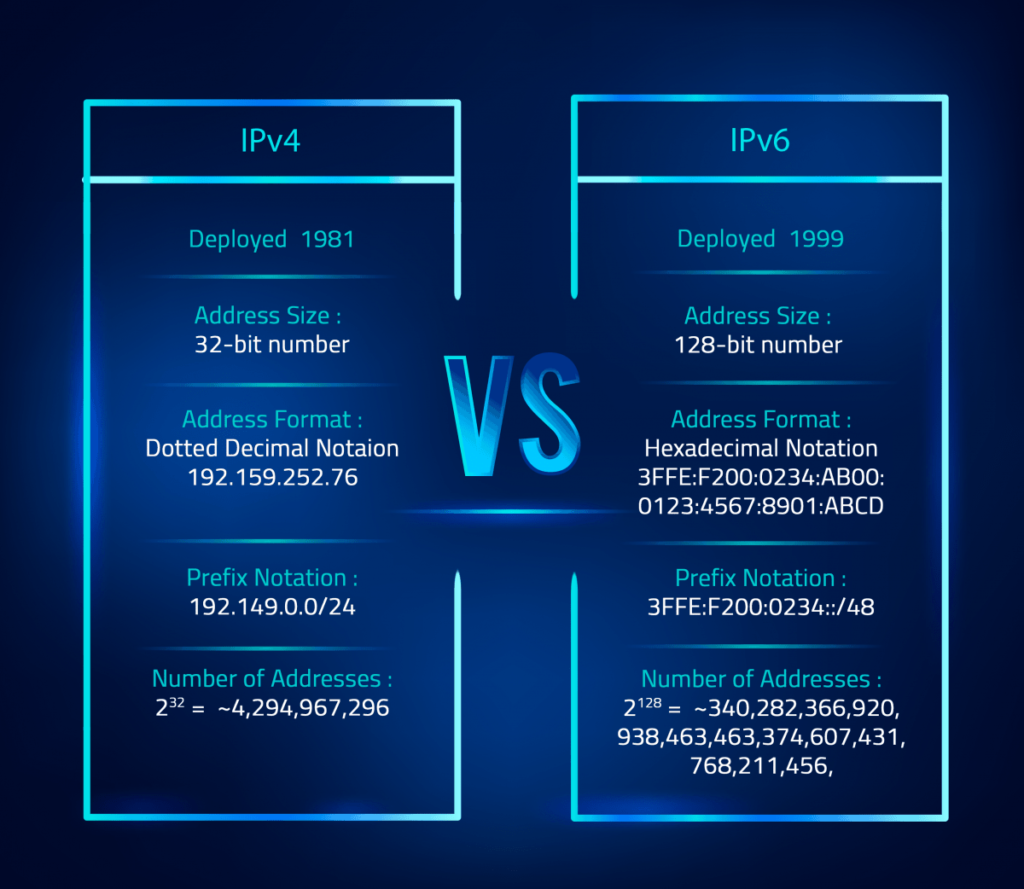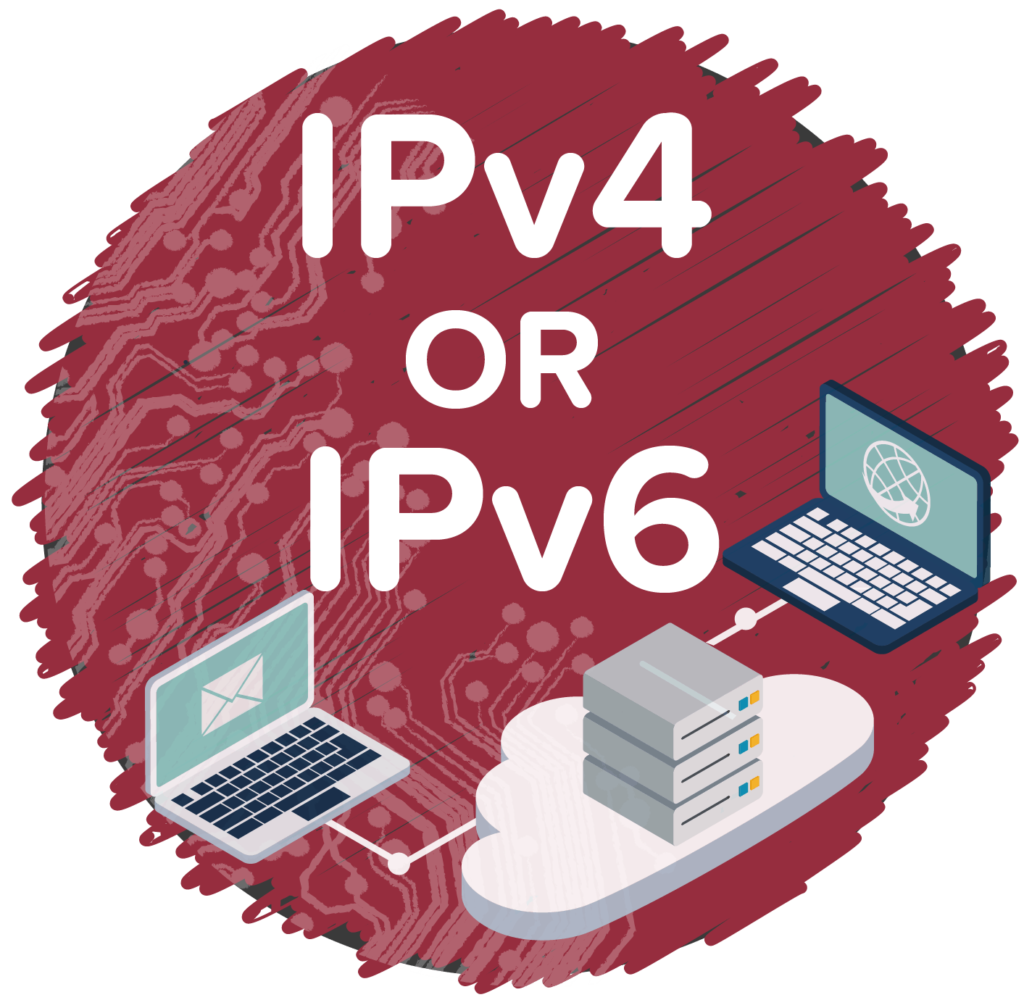IPv4 and IPv6 are the protocols responsible for identifying computers on the Internet and ensuring that information reaches the correct destination. The system has existed since the beginning of the network, but its exponential growth has led to an unforeseen situation: the existence of more devices than the 4.3 million IP addresses that were available before.
To solve the problem, several temporary solutions were explored, but the arrival of IPv6 was crucial to allow an almost infinite amount of addresses, besides bringing more security and larger data packets. Check below for more details on IPv4 and IPv6 and learn all about the different protocols used today.
What are they?
In the early 1980s, when the Internet was still under development, it was necessary to create a system where computers could recognize each other and ensure that information traffic was successful. The solution to this problem was IP, the Internet Protocol, a set of rules common to all connected devices that allowed identification.
This system works in the following way: information from the Internet is like letters that need to be delivered, and the IP is the address that indicates where the data will be sent.
The term IPv4 comes from this. It refers to the way computers generate their addresses and communicate them on the network. Due to the way the number is created, IPv4 has a theoretical limit of 4,294,967,296 different numbers. At that time, this variation was enough to meet the needs of the network in its first steps.
But as the infrastructure grew and the Internet spread around the world, in the mid-1990s the problems began: there were more devices connected than IP addresses available. IPv6 was, therefore, one of the solutions adopted to overcome the situation.
Differences between IPv4 and IPv6

Created in 1995, the new standard brought several important updates, solving even some problems encountered in IPv4. The main change is in how addresses are generated.
In IPv4, each protocol is composed of four groups of two hexadecimal digits, each with 32 bits and varying between 0 and 255. From this are created familiar numbers like 192.168.1.1 and 127.0.0.1 – which are used in local networks – or 216.58.202.132, the Google IP, for example.
IPv6, in turn, has eight groups of numbers, each with four digits (128 bits) hexadecimal. This guarantees that the approximate number of addresses is 3.4 x 10^38 (ten to the 38th power), large enough to avoid a new shortage for a long time.
This is not the only difference between the protocols. IPv6 has advanced security features already integrated, as is the case with IPSec. The same system can be used in IPv4, but needs to be activated directly by the Internet provider. The solution is responsible for making difficult man-in-the-middle attacks, known for the use of fake bank messages, for example, deceiving users to steal their information.
How are they used in everyday life?

The average Internet user interacts with IPs all the time, even without knowing that this is happening. To access any service, it is necessary to know its address in the form of an IPv4-type IP. In the past, this was the only way to access a website.
With the increase in the use of the commercial Internet and the multiplication of the number of sites, it became impossible to memorize so many numbers, which led to the creation of DNS, a system that relates words to sites to facilitate their use.
For example, when you access the address “www.techidence.com”, you are requesting the entry to a DNS server that has filed the IP address related to the site. It passes the information to the user’s device, which can use to access the website. This process is so fast that, most of the time, it ends before we can realize it.
The IPs of common users are usually assigned by their providers. When your computer is inactive, it returns the address to the provider. This is a way to avoid the lack of IPv4 on the Internet.
Another solution found was the creation of DHCP, a system present in wired and wireless routers. The resource creates a kind of “internal” Internet, with IP addresses that only work inside the local network. Thus, all the devices connected to it – computers, mobile phones, and IoT devices, among others – share the same IPv4 but have different internal IPs.
This system is unnecessary in IPv6 since each device can have its address without the danger of repetition. This also ensures that the new protocol is theoretically faster than its predecessor since the data packets would not need to be directed by the DHCP server.
Another advantage of IPv6 is that, due to the way these packets are organized, they can follow different paths until they reach their destination, resulting in less lost information. But even with the advantage, IPv4 is still faster. This is because the data packets in the old version are smaller, and therefore need less time to be delivered.
Do they work on any routers?

Not all computers and peripherals recognize IPv6, being forced to use the old version of the protocol. However, since the most recent system was created more than two decades ago, practically all equipment manufactured today is compatible.
In any case, at the time of purchasing any device that connects to the Internet, it is interesting to confirm which Internet protocols it is compatible with, avoiding possible headaches.
Which is better?

In time, the goal of IPv6 is to replace IPv4 in all devices. This happens worldwide, but in stages, until compatibility is no longer necessary.
Current devices operate with both protocols at the same time: an IPv4 provided by the provider and a single IPv6 generated on the machine itself. This means that it is not necessary to interfere with the configurations related to this system. In practice, IPv6 sacrifices speed for greater security, but this loss is so tiny that it does not interfere with everyday life.
This post may contain affiliate links, which means that I may receive a commission if you make a purchase using these links. As an Amazon Associate, I earn from qualifying purchases.

